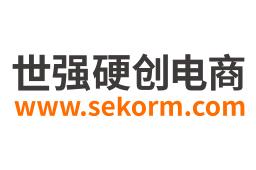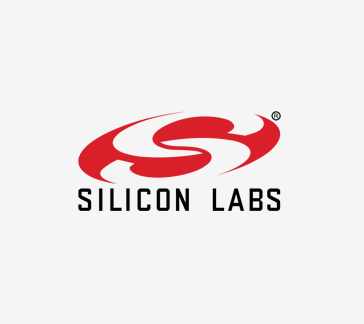Smart City Living Lab Wi-SUN LFN Deployment - Phase 3


The Smart City Living Lab at IIIT Hyderabad plays a pivotal role as a testbed and proof of concept for emerging smart city technologies in the challenging Indian market. In 2022, we delved into the initial Wi-SUN deployment and the subsequent migration from Wi-SUN FAN (Field Area Network) 1.0 to FAN 1.1, emphasizing the significance of each phase. As we transitioned from 2023 to 2024, the focus of the Smart City Living Lab shifted. Rather than solely deploying the infrastructure that forms the backbone of the Wi-SUN network, we began integrating low-power nodes. These nodes allowed us to explore how environmental sensors, water meters, and other battery-powered devices could leverage this infrastructure to enhance intelligence in our surroundings.
Battery-powered sensor nodes have been strategically deployed across the campus. These nodes transmit data to the oneM2M server using a variety of communication infrastructures, including 4G, LoRaWAN and Wi-Fi which follow a point-to-point network.
Wi-SUN FAN operates as a mesh network protocol where each device can directly communicate with its neighboring devices, allowing messages to travel over long distances by hopping between nodes. This robust approach ensures reliable connectivity even in challenging environments. What makes Wi-SUN FAN truly remarkable is its self-forming capability. When new devices are added, the network dynamically adapts and integrates them seamlessly. Furthermore, the network is self-healing, meaning if a communication pathway encounters an obstacle or fails, the system automatically reroutes data to ensure it reaches the designated gateways or central servers. This resilience ensures uninterrupted data flow and enhances the overall efficiency of our smart infrastructure.
Wi-SUN FAN 1.1 introduces a limited function node (LFN) device, a low energy (LE) node. These LFNs are designed with lower power consumption and efficiently support battery-powered equipment. Their remarkable battery life of 15 to 20 years makes them ideal for various applications, including gas and water metering, environmental monitoring, traffic sensing, parking management, and weather sensors. With the integration of LFN nodes into the Wi-SUN mesh network, they now serve as the wireless interface for battery-powered sensors. This seamless communication over the Wi-SUN network ensures data flow to the oneM2M server, enhancing the overall efficiency of the smart infrastructure on the campus.
LFN Architecture
LFNs offer essential capabilities such as PAN (personal area network) discovery/joining and IPv6 packet communication. These LFNs share the same communication stack as full function nodes (FFNs) but with a restricted listening schedule to optimize power consumption and don’t have routing capability. However, LFNs operate exclusively within a PAN rooted at a FAN 1.1 Border Router. They function as children of a FAN 1.1 Router rather than serving as parents to other nodes.
Refer to the diagram below for further clarity:

Wi-SUN Impact on Smart Cities
As cities evolve into smarter ecosystems, they strive to enhance the quality of services by closely monitoring infrastructure and environmental factors. Applications such as water and gas consumption tracking, as well as air-quality monitoring, provide real-time information to the public. This data empowers individuals to make sustainable lifestyle adjustments and protect themselves from harmful pollutants.
The Government of India has set an ambitious goal to replace existing meters with more than 250 million smart energy meters by 2025. To achieve this while ensuring reliability and security, a connectivity standard that scales is essential. Wi-SUN, with its resilient and interoperable standards-based Sub-GHz mesh solution, stands out in the realm of smart grid and smart city applications.
Here’s why Wi-SUN stands out:
1. Scalability: Wi-SUN’s scalability allows it to handle a vast number of devices efficiently. With over 95 million Wi-SUN-capable devices deployed globally, it has proven its unique scalability even in challenging environments.
2. Reliability: Wi-SUN offers a high level of network reliability. Its mesh topology ensures that even if individual nodes fail, the network remains resilient.
3. Cost-Effectiveness: Wi-SUN’s low total cost of ownership makes it an attractive choice for large-scale deployments.
4. Security: Security is a top priority for Wi-SUN FAN. Its native public-key infrastructure (PKI) integration provides certification capabilities for each device. This prevents malicious reprogramming and validates incoming firmware updates, which is crucial for long-term deployments. IPv6 Support: Wi-SUN’s support for IPv6 enables robust networking security features, including intrusion detection, traffic shaping, network analysis, and penetration testing. It outperforms its rivals by maintaining network visibility down to the end devices themselves.
In summary, Wi-SUN FAN plays a pivotal role in shaping smarter cities and ensuring reliable connectivity, security, and efficiency. Smart cities can harness the existing wireless communication infrastructure offered by Advanced Metering Infrastructure (AMI) or street lighting networks to empower a range of adjacent applications. These include smart traffic signals, public transit signs, parking spaces, electric vehicle (EV) charging stations, and more. By leveraging this infrastructure, cities enhance connectivity, efficiency, and sustainability, creating a more intelligent urban environment.
Trade-offs with Cellular Communications
One of the tradeoffs is that cellular systems must be upgraded regularly to keep up with carrier-required updates and sometimes protocol sunsets that require replacing underlying hardware. Most Internet of Things (IoT) devices operate on batteries, making power efficiency crucial. Cellular communications demand relatively high power due to the need to communicate with distant towers (sometimes up to half a kilometer away).
Geographic Coverage vs. Device Density
Choosing between cellular and RF mesh networks depends on network requirements. Cellular connectivity is ideal for extensive geographic areas with sparse network devices. It provides wide coverage but consumes more power. RF Mesh Systems are suited for dense device deployments and offer localized coverage and lower power consumption. While newer IoT cellular protocols offer reduced current draw and sleep modes, they still drain batteries much faster than RF communication modules.
Enhancing Campus Connectivity: LFN Deployment
In the third phase of Wi-SUN mesh network deployment, we introduce LFNs powered by SILICON LABS’ EFR32FG28 SoC. Let’s delve into the details:
The EFR32FG28 SoC is an ideal dual-band Sub-GHz+2.4GHz Bluetooth LE SoC. FG28 is a multi-core solution that provides industry-leading security, low power consumption with fast wakeup times, and integrated power amplifiers to enable the next level of secure connectivity for IoT devices. Integrating an AI/ML Hardware Accelerator enables faster, lower-power inferencing for low-power end nodes. During the third phase deployment of LFNs, various sensor devices that were previously out of reach will now be able to connect to the cloud via Wi-SUN Mesh.
Concluding the Wi-SUN Journey: A Thriving Ecosystem
The Living Lab at the IIIT-H campus has successfully cultivated a robust Wi-SUN ecosystem. This dynamic network now plays multiple pivotal roles:
1. Hackathons and Innovation Challenges:
The Wi-SUN mesh network serves as an experimental playground for hackathons, fostering creativity and rapid prototyping.
Startups leverage this environment to validate their proof-of-concepts, pushing the boundaries of what’s possible.
2. Real-World Testing:
Network service providers could conduct rigorous field tests within this smart city Living Lab.
The Wi-SUN mesh network’s reliability and scalability are put to the test, ensuring its readiness for practical deployment.
The Wi-SUN ecosystem thrives within the IIIT-H campus, bridging theory and practice and propelling us toward a connected future.
- |
- +1 赞 0
- 收藏
- 评论 0
本文由Jo转载自SILICON LABS Official Website,原文标题为:Smart City Living Lab Wi-SUN LFN Deployment - Phase 3,本站所有转载文章系出于传递更多信息之目的,且明确注明来源,不希望被转载的媒体或个人可与我们联系,我们将立即进行删除处理。
相关研发服务和供应服务
相关推荐
完美蓝色壁虎!SoC 开发套件二度测评
本文是一篇Bluetooth Smart 开发套件的测评,从开箱观感,产品功能,产品设计,产品使用方案等不同角度帮助消费者更加清晰、准确地了解蓝色壁虎这一开发套件。
技术探讨 发布时间 : 2019-07-30
【技术】多协议无线SoC解决方案白皮书:将智能互联照明带回家
何为 LED 灯泡增添智能连接性所需的要素,包括各种关键无线技术的比较,以及业界首创的多协议无线SoC解决方案。
技术探讨 发布时间 : 2019-09-04
Silicon Labs(芯科科技) Wi-Fi 芯片和模块选型指南
目录- Wi-Fi SoC and Module Selector Guide Wi-Fi Lineup Wi-Fi Development Kits IoT Wi-Fi Technology Leader Wi-Fi Applications Company Profile
型号- SLEXP8022A,SIWX915,RS9116,WF200,SIWX917,RS9116X-DB-EVK1,RS9116X-SB-EVK1,RS9116X-SB-EVK2
【经验】教你如何修改EFR32MG系列SOC ZigBee工程的CCA阈值
Silicon Labs公司的EFR32MG系列SOC单芯片已被广泛应用于智能家居市场产品中。对于ZigBee协议栈,无论单播还是广播,数据包在发送之前MAC层会检测CCA(Clear Channel Assessment ),如果检测到接收信号强度低于阈值,数据包就不发送。因此需要根据实际情况来设置合理的CCA阈值,本文就指导大家来设置EFR32MG系列SOC的CCA阈值。
设计经验 发布时间 : 2019-01-31
xG26再告捷!荣获2024全球电子成就奖-RF/无线年度创新产品奖
SILICON LABS(芯科科技)旗舰级BG26蓝牙SoC和MG26多协议SoC在日前获颁2024年全球电子成就奖(WEAA)年度射频/无线/微波创新产品奖!BG26和MG26系列SoC是迄今物联网产业领先企业之最高性能的系列产品,可用于最复杂的物联网应用,如需要较强的处理能力、能效和无线性能的Matter等具备严苛要求之新兴应用,以及包括智能家居、智慧城市和工业用例。
原厂动态 发布时间 : 2024-11-13
【经验】Matter入门指导3:基于GSDK创建Matter - SoC Lighting over Thread工程
本文主要介绍使用EFR32MG24 Breakout Board,基于GSDK创建Matter - SoC Lighting over Thread工程的方法,我们后面会使用这个工程的固件来做Matter over Thread灯设备的控制实验。
设计经验 发布时间 : 2023-05-18
EFR32BG22C112 Wireless Gecko SoC Data Sheet
型号- EFR32BG22C112F352GM32-C,EFR32BG22C224F512IM32-CR,EFR32BG22C112
EFR32BG22E Wireless Gecko SoC Family Data Short
型号- EFR32BG22E,EFR32BG22E224F512IM40-C,EFR32BG22E224F512IM32-C,EFR32BG22E224F512IM32-CR
【IC】芯科科技全新双频段FG28 SoC,支持蓝牙/sub-GHz双频,实现远距离广覆盖Wi-SUN及专有协议连接
SILICON LABS推出全新的双频段FG28片上系统(SoC),这款产品专为Amazon Sidewalk、Wi-SUN和其他专有协议等远距离广覆盖网络和协议而设计;可用于机器学习推理的内置人工智能/机器学习(AI/ML)加速器。
新产品 发布时间 : 2023-06-14
AN1416: SiWx917 SoC Memory Map Application Note
型号- SIWG917M100MGTBA,SIWG917M121XGTBA,SIWG917,SIWG917M111XGTBA,SIWG917M110LGTBA,SIWX917,SIWG917M111MGTBA,SIWG917M141XGTBA
EFR32FG28 Wireless SoC Family Data Sheet
型号- EFR32FG28A120F1024GM48-A,EFR32FG28A010F1024GM48-A,EFR32FG28B310F1024IM48-A,EFR32FG28A110F1024GM48-A,EFR32FG28A110F1024GM68-A,EFR32FG28B310F1024IM68-A,EFR32FG28A322F1024IM68-AR,EFR32FG28B320F1024IM68-A,EFR32FG28A122F1024GM68-A,EFR32FG28A112F1024GM68-A,EFR32FG28B312F1024IM68-A,EFR32FG28A122F1024GM48-A,EFR32FG28B312F1024IM48-A,EFR32FG28,EFR32FG28B322F1024IM68-A,EFR32FG28B320F1024IM48-A,EFR32FG28A112F1024GM48-A,EFR32FG28B322F1024IM48-A,EFR32FG28A120F1024GM68-A,EFR32FG28A010F1024GM68-A
【经验】EFR32MG系列SOC创建ZigBee支持PTA的NCP工程操作步骤
ZigBee产品中需要网关来连接到以太网,实现手机对ZigBee设备的查看和控制。ZigBee网关中会涉及到ZigBee和WIFI两种2.4GHz的无线协议,这样就存在相互干扰的问题。Silicon Labs的EFR32MG系列SOC支持PTA共存机制,对于和WIFI的共存有较大的帮助。本文指导大家创建支持PTA的NCP工程。
设计经验 发布时间 : 2020-04-27
“More is More“ When it Comes to Memory on Wi-Fi IoT Devices
This blog describes how much memory IoT devices actually need, and how SILICON LABS’ SiWx917M Wi-Fi 6 SoCs respond to the IoT developers’ call for more memory.
产品 发布时间 : 2024-10-30
EFR32BG22 Wireless Gecko SoC Family Data Sheet
型号- EFR32BG22C224F512IM32-CR,EFR32BG22C222F352GM32-C,EFR32BG22C224F512GM40-C,EFR32BG22C222F352GN32-C,EFR32BG22C222F352GM40-C,EFR32BG22C224F512IM40-C,EFR32BG22C224F512IM32-C,EFR32BG22C224F512GM32-C,EFR32BG22C224F512GN32-C,EFR32BG22
电子商城
品牌:SILICON LABS
品类:Wireless Gecko SoC
价格:¥8.1764
现货: 104,128
品牌:SILICON LABS
品类:Mighty Gecko Multi-Protocol Wireless SoC
价格:¥27.0929
现货: 90,767
品牌:SILICON LABS
品类:Wireless Gecko SoC
价格:¥10.4994
现货: 61,779
品牌:SILICON LABS
品类:Wireless Gecko SoC
价格:¥11.5212
现货: 59,367
现货市场
服务
根据用户的蓝牙模块,使用Bluetooth 蓝牙测试装置MT8852B,测试蓝牙1.0至5.1,包括传输速率、功率、频率、调制和接收机灵敏度,生成测试报告。支持到场/视频直播测试,资深专家全程指导。
实验室地址: 深圳 提交需求>
支持Bluetooth SIG最新的测试规范,支持2.0(EDR), 2.1(EDR), 3.0(HS), 4.0(LE)规范, 并且能完整覆盖BR/EDR/HS/BLE的所有射频测试项目。测试标准:RF.TS/4.03 ;RF-PHYTS/40.3。
实验室地址: 深圳 提交需求>




































































































































































































登录 | 立即注册
提交评论